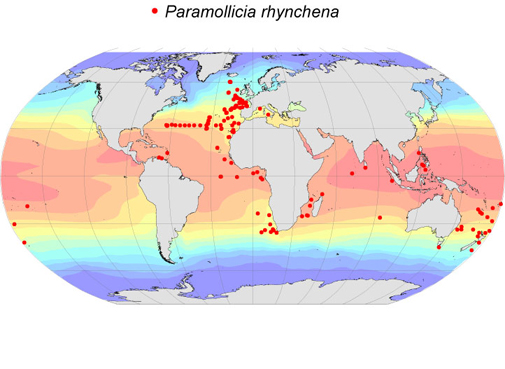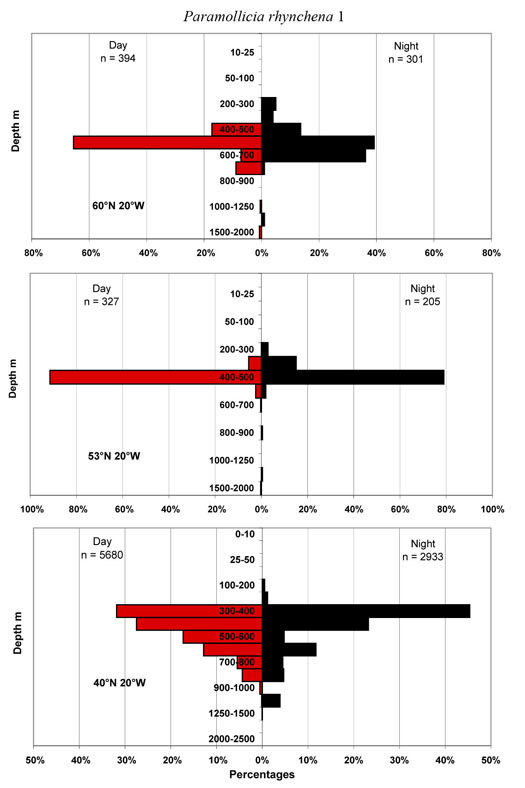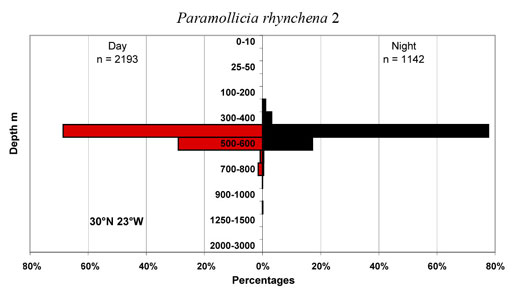Atlas of Atlantic Ostracods
Taxon details
Paramollicia rhynchena (Müller, G.W., 1906)
- Order:
- MYODOCOPA
- Suborder:
- Halocypridina
- Family:
- Halocyprididae
- Subfamily:
- Conchoecinae
- Size range (females):
- 2.2-2.7 mm
- Size range (males):
- 2.2-2.5 mm
- Depth:
- mesopelagic
Notes
398 records
This species was placed tentatively by Müller (1906) in his ‘mollis group’, Poulsen re-classified it in Paramollicia. It is numerically dominant at mesopelagic depths at middle latitudes in the North Atlantic (40°-50°N). The map shows that its range extends north to at least 60°N and south to about 40°S. Poulsen (1973) found it to be abundant to the north of New Zealand, but Chavtur (2003) only recorded it once to the south of Australia. It occurs in the Indian Ocean, but never in abundance. The bathymetric profiles show that it is abundant at 400-600m or even to 900m. There is no evidence for it undertaking diel vertical migrations. Living specimens, while still being fairly translucent, are quite intensely pigmented with red and orange particularly at the bases of the limbs and in the anterior ventral region of the carapace.
| 44°N | n | Mean mm | s.d. | Range mm |
|---|---|---|---|---|
| Female | 419 | 2.43 | 0.086 | 2.20-2.72 |
| Male | 223 | 2.34 | 0.052 | 2.20-2.46 |
| A-1 | 929 | 1.79 | 0.055 | 1.59-1.92 |
| A-2 | 1252 | 1.24 | 0.040 | 1.12-1.34 |
| A-3 | 1340 | 0.88 | 0.027 | 0.78-0.94 |
| A-4 | 986 | 0.66 | 0.023 | 0.56-0.74 |
| Azores Front | n | Mean mm | s.d. | Range mm |
|---|---|---|---|---|
| Female | 26 | 2.54 | 0.074 | 2.44-2.66 |
| Male | 12 | 2.37 | 0.083 | 2.22-2.46 |
| A-1 | 4 | 1.74 | 0.030 | 1.70-1.78 |
| A-2 | 7 | 1.22 | 0.050 | 1.16-1.30 |
| A-3 | 7 | 0.86 | 0.015 | 0.84-0.88 |
| A-4 | 21 | 0.64 | 0.029 | 0.60-0.66 |






